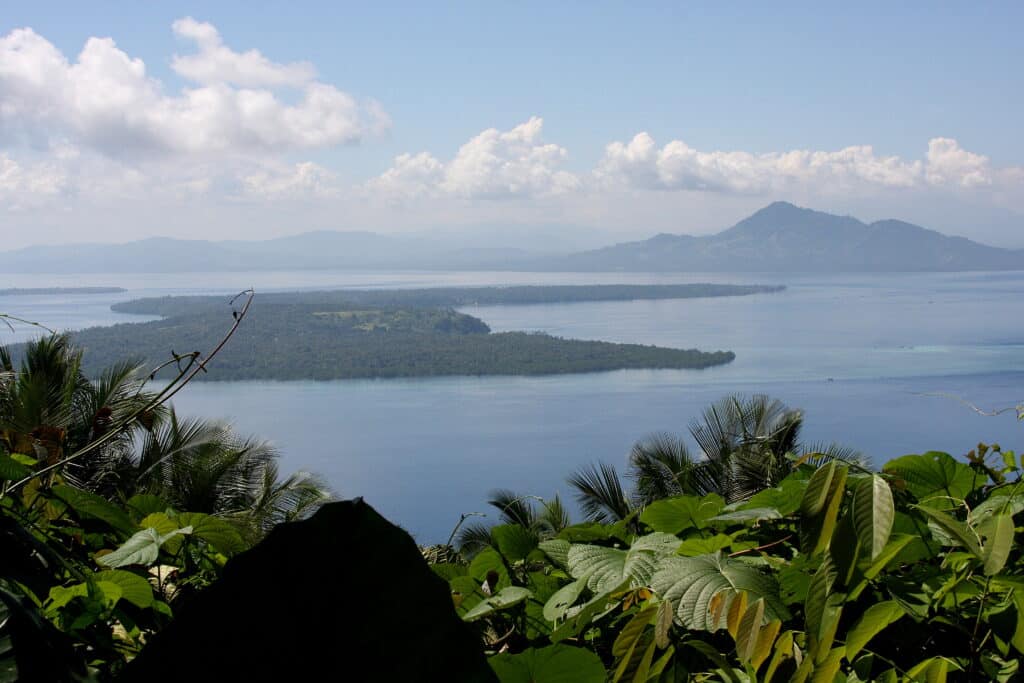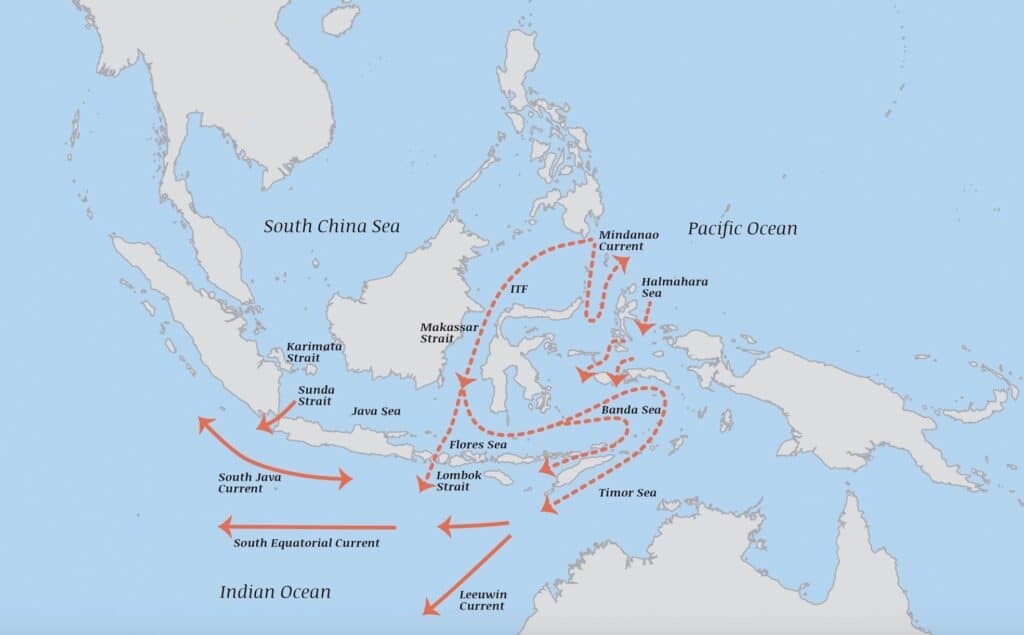Our ongoing partnership with Murex Resorts in North Sulawesi (Manado, Bunaken, and Bangka) allows us to explore their sites’ remarkable coral species and marine biodiversity. Each visit increases our knowledge and strengthens our fascination, leading to us being “hooked” and needing to return to see more!
Oversized Coral Colony Heaven
On our most recent trip, we went to train local communities about coral reef preservation and restoration. One thing really struck us at this time: the large quantity of huge, oversized coral colonies present at the 3 dives sites. Some of the coral colonies are as large as houses, with a lot of colonies the size of trucks. It’s amazing.
When recalling the largest colonies of various marine species, North Sulawesi dominates our memories about 95% of the time. Notably, Batas Kota in Manado Bay boasts a massive hammer coral, Euphyllia (Fimbriaphyllia) ancora, extending to the horizon.

Fukui point in Bunaken, North Sulawesi is another site where you can find pagoda coral (Turbinaria peltata) that is the size of a tennis court. This colony is a reef onto itself.

Diving Sabora, Bangka Island, with its gentle currents, felt like swimming through a coral documentary. The entire coastline features a continuous expanse of diverse coral colonies, flourishing from 5m (15 feet) to 15 meters (45 feet) deep.

Separated by a 20-meter sand channel, the reef showcases enormous Pavona clavus formations, house-sized, transitioning into fields of Goniopora (flowerpot coral), Alveopora gigas, and Gardinoseris planulata (honeycomb coral), among others.
What is so special about North Sulawesi?
Bunaken National Park
Established in 1991, Bunaken National Park marked a pivotal moment as Indonesia’s first designated marine protected area, encompassing approximately 890.65 square kilometers of marine and terrestrial ecosystems. This park’s creation reflected a growing awareness of the region’s exceptional biodiversity, encompassing five islands: Bunaken, Manado Tua, Mantehage, Nain, and Siladen. Its diverse habitats include coral reefs, mangroves, seagrass beds, and coastal terrestrial areas, providing refuge for a vast array of marine life, including over 390 coral species, various fish species, marine mammals, and sea turtles.
Nearly 30 years of dedicated conservation efforts, involving collaborations between local communities, government agencies, and NGOs, have yielded significant results. Patrols, community outreach programs, and sustainable tourism initiatives have played crucial roles in mitigating threats such as destructive fishing practices, including bombing, which have ravaged reefs in surrounding areas. This success in safeguarding the reefs of North Sulawesi underscores the vital role of well-managed marine parks and responsible dive tourism in preserving fragile marine ecosystems. The park serves as a model for effective marine conservation in the Coral Triangle.

Celebes Basin
The deep Celebes Basin, a significant geological feature with a maximum depth of approximately 6,200 meters, plays a crucial role in the regional marine environment. Its formation, resulting from complex tectonic activity over millions of years, has created a unique bathymetric profile. This deep basin, combined with the substantial depths of Manado Bay (800m) and the area behind Bunaken Island (1800m), contributes to a consistent thermal buffering effect. The basin’s immense volume acts as a heat sink, moderating temperature fluctuations and thus helping to mitigate large-scale coral bleaching events. This thermal stability has been instrumental in preserving the region’s extensive and diverse coral colonies, making it a critical area for marine biodiversity.
The Indonesian Throughflow
The Indonesian Throughflow (ITF) is a significant oceanographic phenomenon, driven by the persistent trade winds of the Pacific Ocean. These winds push warm surface water westward, creating a hydraulic head difference between the Pacific and Indian Oceans. This pressure gradient propels a massive volume of water, estimated at 10-15 million cubic meters per second, through the intricate network of straits and passages within the Indonesian archipelago. This continuous influx of cooler, nutrient-rich oceanic water from the Pacific has a profound effect on the regional climate and marine ecosystems.
Specifically, the ITF acts as a vital cooling mechanism, mitigating the impacts of rising sea temperatures and reducing the risks of coral bleaching. The constant flow of cooler water helps to stabilize the thermal environment of coral reefs, particularly in regions like North Sulawesi, making them more resilient to thermal stress. Furthermore, the ITF’s nutrient transport contributes to the high productivity of the surrounding waters, supporting a diverse and abundant marine life. This unique oceanographic feature is a critical factor in maintaining the ecological balance and biodiversity of the Coral Triangle.

North Sulawesi: A Coral Jewel
The combination of these factors has created a remarkable coral ecosystem in North Sulawesi. Beyond its reputation as a muck diving haven and turtle sanctuary, the region boasts exceptional coral diversity and some of the world’s oldest coral colonies. These large coral colonies represent a valuable world heritage and deserve comprehensive monitoring, including time-lapse studies and transects, to gather essential data for future coral reef research.
We really appreciate our partnership with Murex Dive Resorts for their commitment to coral conservation and being great partners in North Sulawesi. For more information, visit: http://murexdive.com/.
